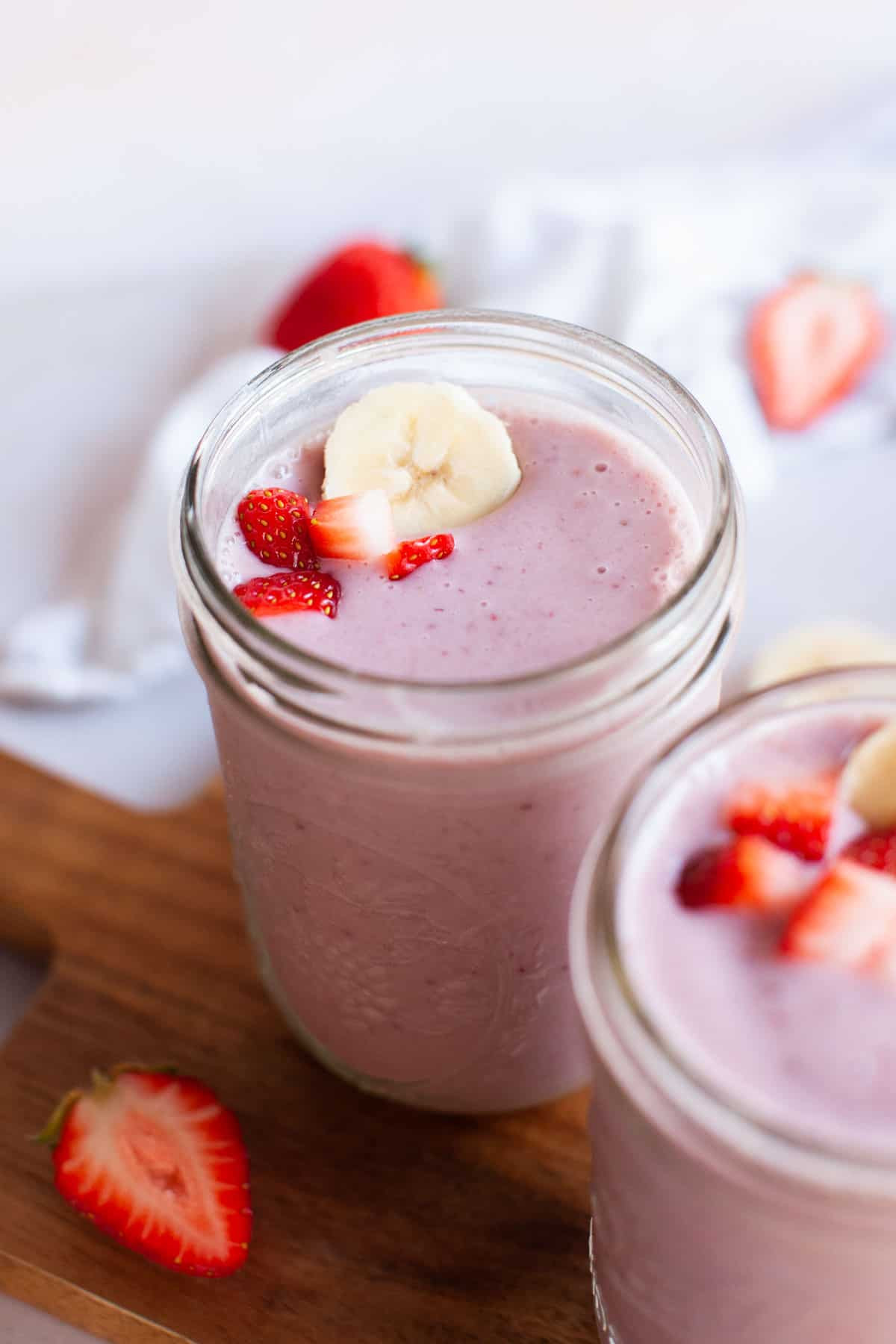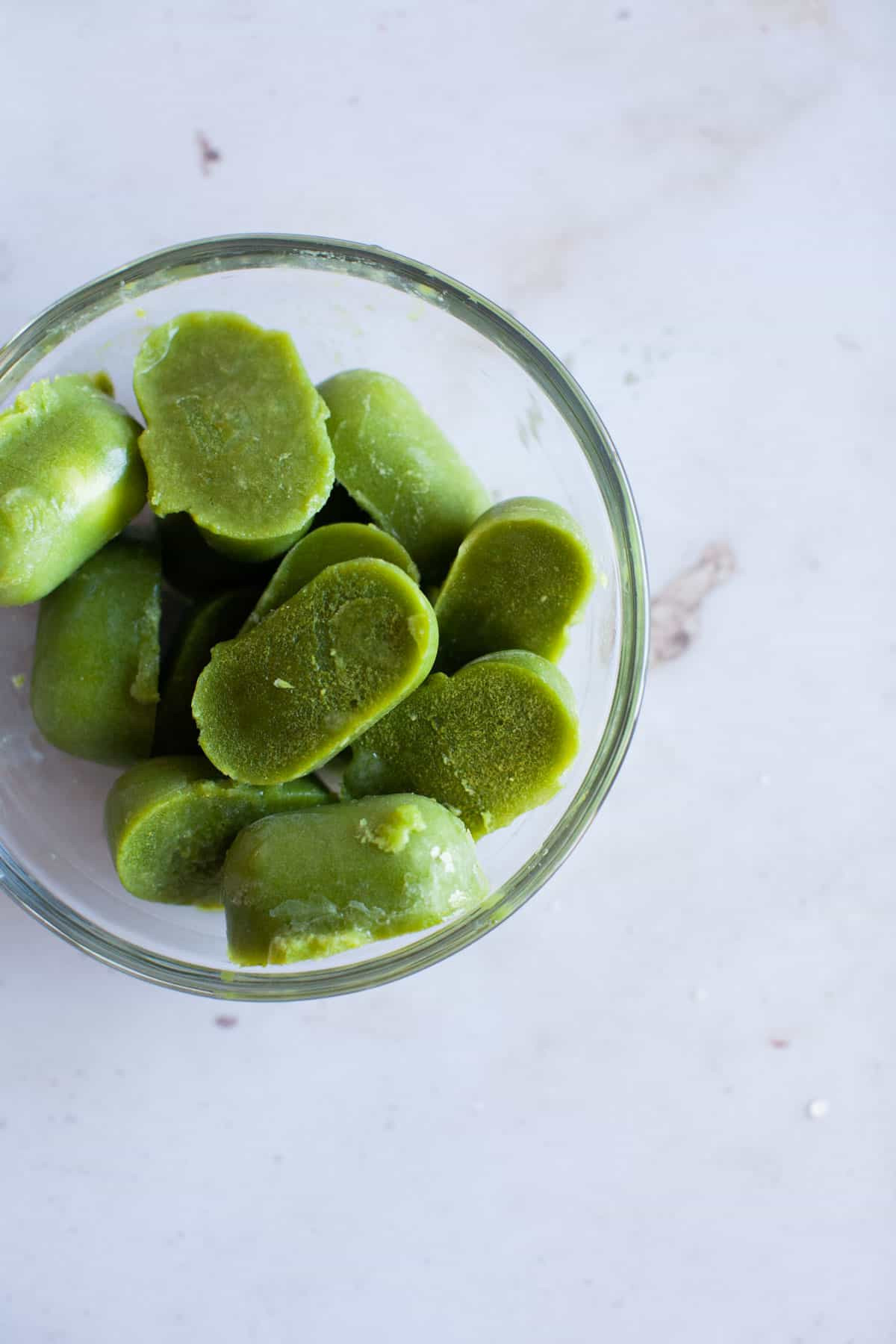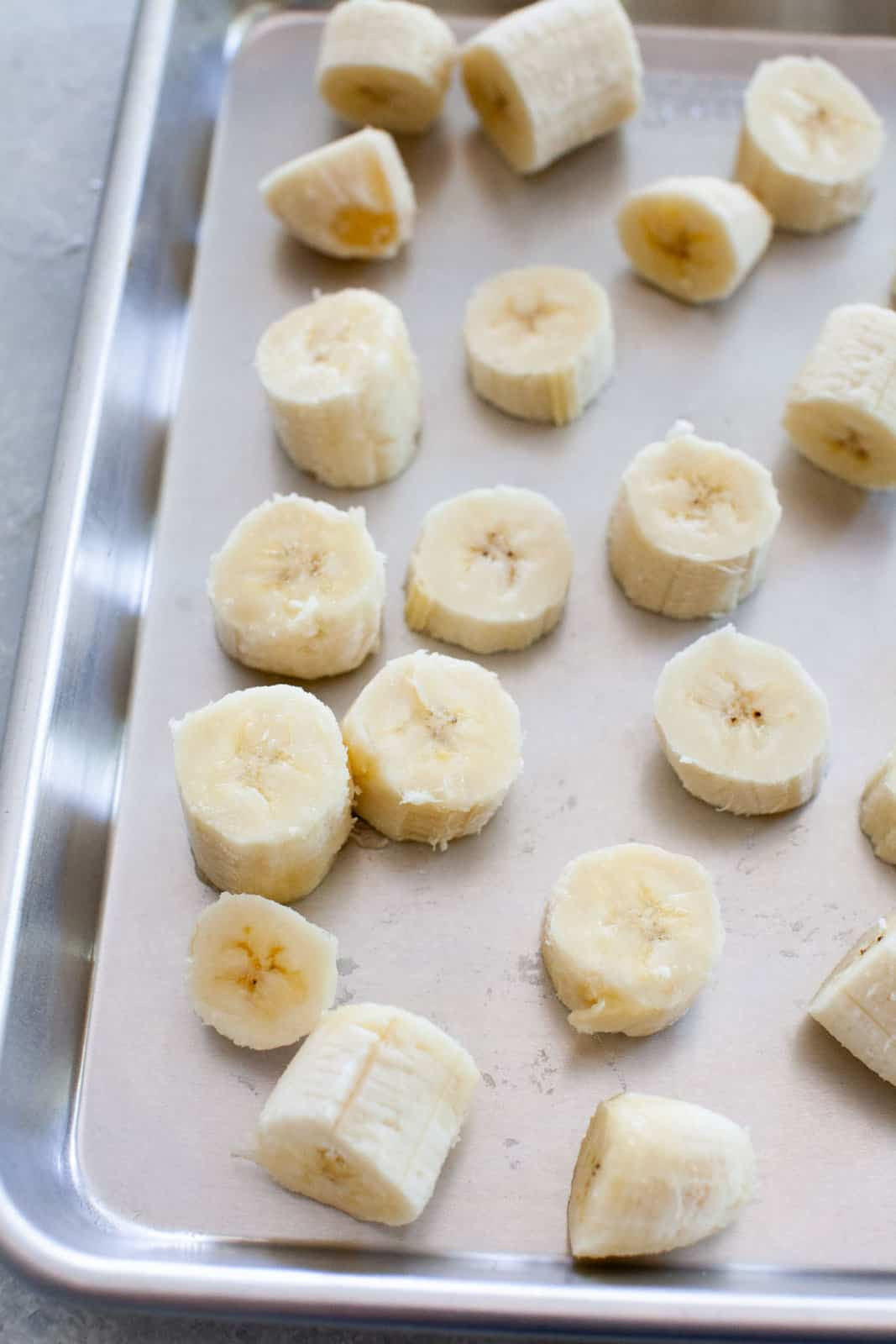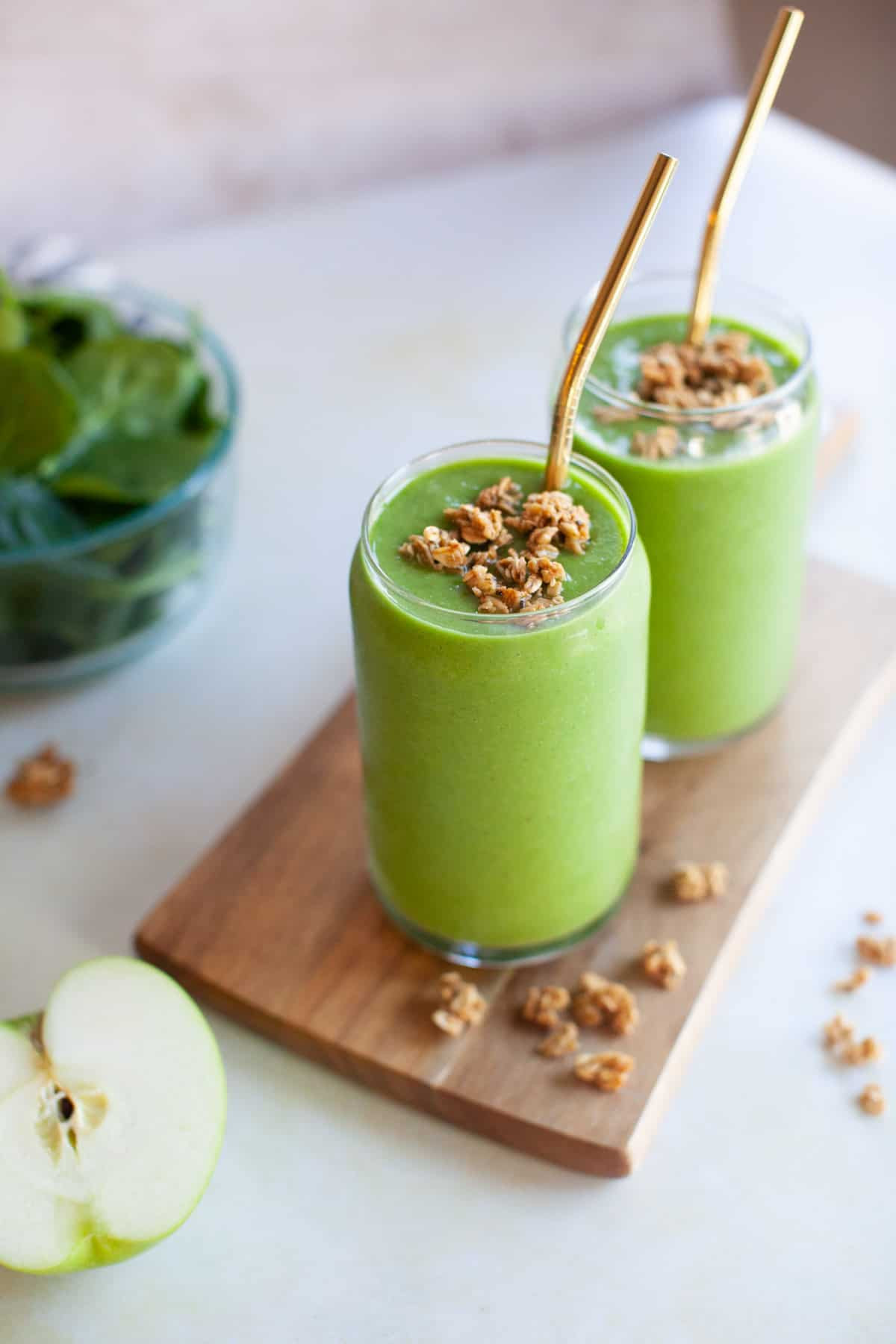Saving that delicious smoothie for later is absolutely possible! At savewhere.net, we provide you with easy and effective methods to store your smoothies, ensuring they remain as tasty and nutritious as when freshly made. Discover the best smoothie storage tips, tricks, and money-saving strategies to enjoy your favorite blended beverages anytime, anywhere. Whether you’re looking for simple refrigeration techniques, freezer-friendly options, or ways to prep your ingredients in advance, we’ve got you covered with tips on blending techniques, meal prepping and reducing food waste.
1. Can Smoothies Be Saved?
Yes, smoothies can be saved for later consumption, typically for up to 24 hours in the refrigerator or several months in the freezer. According to the Academy of Nutrition and Dietetics, properly storing smoothies can help retain their nutritional value and prevent spoilage.
To ensure the best quality and safety when saving your smoothie, consider these points:
- Refrigeration: Store your smoothie in an airtight container in the refrigerator for no more than 24 hours to minimize separation and maintain flavor.
- Freezing: For longer storage, freeze your smoothie in freezer-safe containers or bags. This can preserve the smoothie for up to 2-3 months.
- Ingredient Considerations: Smoothies with certain ingredients like dairy or fresh fruits may not hold up as well over time. Be mindful of these ingredients when planning to store your smoothie.
1.1. What Makes a Smoothie Go Bad?
Several factors contribute to a smoothie going bad, including ingredient degradation, bacterial growth, and oxidation. According to the U.S. Department of Agriculture (USDA), food spoilage is often caused by microorganisms.
- Bacterial Growth: Fresh fruits and vegetables can harbor bacteria that multiply over time, especially at room temperature, leading to spoilage.
- Oxidation: Exposure to air can cause oxidation, which degrades the vitamins and antioxidants in the smoothie.
- Ingredient Separation: Over time, the different components of a smoothie (liquids, solids) can separate, affecting the texture and taste.
1.2. How Long Can Smoothies Be Stored Safely?
Smoothies can be stored safely for varying durations depending on the storage method. The general guidelines are as follows:
- Refrigerated: Consume within 24 hours to minimize bacterial growth and maintain optimal flavor and nutritional value.
- Frozen: Can be stored for 2-3 months without significant loss of nutrients or flavor. Ensure proper freezer-safe containers are used to prevent freezer burn.
The USDA recommends that perishable foods should not be left at room temperature for more than two hours.
2. How to Store Smoothies in the Fridge for Next-Day Enjoyment
Storing smoothies in the fridge is a convenient option for short-term preservation. Proper techniques ensure the smoothie remains enjoyable the next day.
- Airtight Containers: Store your smoothie in an airtight container such as a mason jar or a BPA-free plastic container to minimize oxidation and bacterial contamination.
- Fill to the Top: Reduce air exposure by filling the container to the top. If there’s extra space, use plastic wrap to create a barrier between the smoothie and the lid.
- Refrigerate Promptly: Place the smoothie in the refrigerator as soon as possible, ideally within an hour of blending.
2.1. Best Containers for Refrigerating Smoothies
Choosing the right container is essential for maintaining the quality of your refrigerated smoothie.
| Container Type | Pros | Cons |
|---|---|---|
| Mason Jars | Airtight seal, durable, easy to clean, reusable | Can be heavy, glass can break |
| BPA-Free Plastic | Lightweight, durable, often stackable, affordable | Can stain, may retain odors, not as environmentally friendly as glass |
| Stainless Steel | Durable, doesn’t stain or retain odors, environmentally friendly | Can be more expensive, not transparent |
| Glass with Silicone | Airtight seal, easy to clean, doesn’t stain or retain odors, protected by silicone sleeve | Can be more expensive than standard glass containers |
| Vacuum-Sealed | Removes excess air, extending freshness; great for preventing oxidation; maintains flavor and nutritional value longer | Can be more expensive; requires a vacuum pump or system; some models may be bulkier or more difficult to store easily |
2.2. Tips for Keeping Refrigerated Smoothies Fresh
To maximize the freshness of your refrigerated smoothies, consider these additional tips:
- Add Acidic Ingredients: A squeeze of lemon or lime juice can act as a natural preservative, slowing down oxidation.
- Avoid Dairy if Possible: Dairy-based smoothies may spoil faster. If you must include dairy, opt for pasteurized options.
- Shake Well Before Drinking: Separation is natural. Shake the smoothie vigorously before consuming to reincorporate the ingredients.
 Beauty shot of strawberry smoothie jar.
Beauty shot of strawberry smoothie jar.
Alt text: A close up of a strawberry banana smoothie in a clear glass jar, showcasing its vibrant pink color and creamy texture.
3. Freezing Smoothies: A Comprehensive Guide
Freezing smoothies is an excellent way to preserve them for longer periods. There are several methods to choose from, each with its advantages.
- Smoothie Cubes: Pour the smoothie into silicone ice cube trays for single-serving portions.
- Ziplock Bags: Store smoothies in freezer-safe ziplock bags, laying them flat to save space.
- Mason Jars: Use freezer-safe mason jars, leaving room for expansion.
3.1. Step-by-Step Guide to Freezing Smoothies
Follow these steps to freeze your smoothies effectively:
- Prepare the Smoothie: Blend your smoothie to the desired consistency.
- Choose Your Method: Select your preferred freezing method (cubes, bags, or jars).
- Pour and Seal: Pour the smoothie into your chosen container, leaving some headspace in jars to allow for expansion. Seal tightly, removing as much air as possible from bags.
- Freeze: Place containers in the freezer, laying bags flat. Freeze for at least 4-6 hours, or until solid.
3.2. Best Practices for Thawing Frozen Smoothies
Proper thawing techniques are essential to maintaining the texture and flavor of your smoothie.
| Method | Process | Pros | Cons |
|---|---|---|---|
| Refrigerator | Place the frozen smoothie in the refrigerator for several hours or overnight. | Preserves texture, minimizes bacterial growth | Time-consuming, may require planning ahead |
| Cold Water Bath | Submerge the sealed container in a bowl of cold water, changing the water every 30 minutes. | Faster than refrigerating, helps maintain even thawing | Requires monitoring, risk of water contamination if the container isn’t sealed properly |
| Blender | Add the frozen smoothie directly to a blender with a bit of liquid (milk, juice, or water). | Quick, allows for immediate consumption, can adjust consistency | May require a high-powered blender, could result in a slightly different texture compared to refrigerating |
| Microwave (Avoid) | Microwaving is generally not recommended, but if necessary, use short intervals and stir frequently. | Fastest method | Can cause uneven thawing, may affect texture and flavor negatively, risk of overheating |
 green smoothie that has been frozen into ice cubes
green smoothie that has been frozen into ice cubes
Alt text: Green smoothie frozen into ice cubes in a silicone tray, perfect for portioning and easy use.
4. Freezing Smoothie Ingredients: Meal Prep Made Easy
Freezing individual smoothie ingredients is a great way to streamline your morning routine.
- Pre-Portioned Bags: Combine fruits, vegetables, and other ingredients in individual bags for quick blending.
- Frozen Fruit: Freeze fruits like bananas, berries, and mangoes to add thickness and chill to your smoothies.
- Greens: Freeze spinach or kale in bags or trays for easy addition to your blends.
4.1. How to Freeze Fruits and Vegetables for Smoothies
Follow these tips to freeze your smoothie ingredients effectively:
- Wash and Prep: Wash all fruits and vegetables thoroughly. Peel and chop as needed.
- Flash Freeze: Lay the prepared ingredients on a baking sheet lined with parchment paper. Freeze for 1-2 hours until solid.
- Bag and Store: Transfer the frozen ingredients to freezer-safe bags, removing as much air as possible.
4.2. Assembling Smoothie Packs for Quick Blending
Creating smoothie packs can save you time and effort each morning.
- Choose a Recipe: Select a smoothie recipe you enjoy.
- Portion Ingredients: Measure out the necessary fruits, vegetables, and seeds.
- Combine and Store: Place all ingredients in a freezer-safe bag, seal, and freeze.
 sliced bananas ready to freeze
sliced bananas ready to freeze
Alt text: Sliced bananas laid out on a cutting board, ready to be frozen for future smoothie preparation.
5. Reviving a Smoothie After Storage
Sometimes, stored smoothies can lose their original texture and flavor. Here’s how to bring them back to life.
- Blending: Re-blend the smoothie with a bit of liquid (milk, juice, or water) to restore its consistency.
- Adding Fresh Ingredients: Incorporate fresh fruits, vegetables, or yogurt to enhance the flavor and nutritional value.
- Adjusting Consistency: If the smoothie is too thick, add more liquid. If it’s too thin, add more frozen fruit or ice.
5.1. Addressing Texture Changes in Stored Smoothies
Texture changes are common in stored smoothies, but they are easily fixable.
- Separation: Shake well or re-blend to mix separated ingredients.
- Thickness: Add liquid to thin out the smoothie.
- Thinness: Add frozen fruit, ice, or yogurt to thicken the smoothie.
5.2. Enhancing Flavor After Storage
Flavor can diminish over time, but there are simple ways to boost it.
- Add Fresh Fruit: A few pieces of fresh fruit can brighten the flavor.
- Use Spices: A dash of cinnamon, nutmeg, or ginger can add warmth and depth.
- Incorporate Extracts: A drop of vanilla or almond extract can enhance the sweetness and aroma.
6. Smoothie Recipes That Store Well
Certain smoothie recipes hold up better than others when stored. Here are a few favorites:
- Berry Blast: A mix of frozen berries, banana, spinach, and almond milk.
- Tropical Treat: Mango, pineapple, coconut milk, and a squeeze of lime.
- Green Goodness: Spinach, kale, green apple, banana, and water.
6.1. The Best Ingredients for Smoothie Storage
Some ingredients are more storage-friendly than others.
| Ingredient | Benefits | Considerations |
|---|---|---|
| Frozen Fruit | Retains texture and flavor well, adds thickness | Can be expensive, ensure it’s properly frozen to prevent freezer burn |
| Spinach | Freezes well, minimal flavor change | Can become slightly watery; consider flash-freezing before storing |
| Chia Seeds | Absorbs liquid, helps maintain consistency | Can make the smoothie thicker over time; adjust liquid accordingly |
| Nut Butters | Adds richness and protein, stores well | Can separate; re-blend before consuming |
| Protein Powder | Enhances nutritional value, stabilizes texture | Some powders can clump; blend thoroughly |
6.2. Recipes to Avoid Storing
Some recipes don’t store as well due to ingredient degradation.
- Dairy-Heavy Smoothies: Dairy can sour or separate, affecting taste and texture.
- Citrus-Based Smoothies: Citrus can become bitter over time.
- Avocado Smoothies: Avocado can brown and develop an off-flavor.
7. Maximizing Nutritional Value When Saving Smoothies
Preserving the nutritional content of your smoothies is crucial when saving them. Proper storage and ingredient selection play key roles.
- Antioxidant Retention: Store smoothies with high antioxidant fruits like berries in airtight containers to minimize oxidation.
- Vitamin Preservation: Use quick freezing methods for ingredients to retain vitamin content. According to a study by the University of California, Davis, quick freezing helps preserve vitamins in fruits and vegetables more effectively than slow freezing.
- Protein Integration: Add protein powders or nut butters to help stabilize the mixture and maintain nutritional value.
7.1. Tips for Retaining Vitamins and Minerals
To keep your smoothies packed with essential nutrients, follow these tips:
- Use Fresh, High-Quality Ingredients: Start with the freshest produce available to maximize vitamin and mineral content.
- Minimize Storage Time: The longer a smoothie is stored, the more nutrients it may lose. Consume refrigerated smoothies within 24 hours and frozen smoothies within 2-3 months.
- Add a Source of Vitamin C: Adding citrus fruits or vitamin C powder can act as a natural preservative and help retain other vitamins.
7.2. Addressing Nutrient Loss Over Time
Even with proper storage, some nutrient loss is inevitable. Here’s how to mitigate it:
- Supplement with Fresh Additions: When reviving a stored smoothie, add a handful of fresh spinach or a few berries to boost its nutrient content.
- Consider Nutrient-Rich Boosters: Add supplements like spirulina, flax seeds, or chia seeds to enhance the nutritional profile.
- Vary Your Smoothie Recipes: Use a variety of ingredients to ensure a wide range of nutrients in your diet.
 granola on top of a green smoothie with a copper straw
granola on top of a green smoothie with a copper straw
Alt text: A green apple smoothie topped with granola and served with a copper straw, highlighting its healthy ingredients.
8. Troubleshooting Common Smoothie Storage Issues
Even with the best practices, you might encounter some issues when storing smoothies. Here are solutions to common problems:
- Separation: Re-blend the smoothie or shake vigorously to recombine ingredients.
- Off-Flavor: Add fresh fruit, spices, or a squeeze of citrus to enhance the taste.
- Watery Texture: Add frozen fruit, ice, or yogurt to thicken the smoothie.
8.1. Dealing with Separation
Separation is a common issue, especially with smoothies containing both liquids and solids.
- Shake Vigorously: A good shake can often resolve minor separation issues.
- Re-Blend: If shaking doesn’t work, re-blend the smoothie for a smoother consistency.
- Add a Stabilizer: Incorporate ingredients like chia seeds, flax seeds, or nut butter to help bind the mixture.
8.2. Correcting Texture Problems
Texture can change during storage, but it’s usually easy to fix.
- Too Thick: Add liquid (milk, juice, or water) to thin the smoothie.
- Too Thin: Add frozen fruit, ice, or Greek yogurt to thicken it.
- Grainy: Re-blend the smoothie for a smoother texture.
9. The Environmental and Economic Benefits of Saving Smoothies
Saving smoothies isn’t just convenient; it’s also good for the environment and your wallet.
- Reduced Food Waste: Storing leftover smoothies prevents them from going to waste, reducing your environmental footprint. According to the EPA, food waste is a significant contributor to landfills.
- Cost Savings: Using leftover ingredients and saving smoothie portions helps you save money on groceries.
- Efficient Meal Prep: Preparing smoothies in advance and storing them can save you time and effort during busy mornings.
9.1. Reducing Food Waste
Food waste is a significant global issue, and saving smoothies is a small but impactful way to contribute to the solution.
- Plan Ahead: Make only the amount of smoothie you can consume in one sitting or store for later.
- Use Leftover Ingredients: Incorporate leftover fruits and vegetables into your smoothies.
- Proper Storage: Use appropriate containers and storage methods to prolong the life of your smoothies.
9.2. Saving Money
Saving smoothies can lead to significant cost savings over time.
- Buy in Bulk: Purchase smoothie ingredients in bulk to save money.
- Use Discounted Produce: Take advantage of sales and discounts on fruits and vegetables.
- Avoid Eating Out: Having pre-made smoothies on hand reduces the temptation to buy expensive smoothies or other breakfast items.
10. Advanced Techniques for Smoothie Storage
For those looking to take their smoothie storage to the next level, here are some advanced techniques:
- Vacuum Sealing: Use a vacuum sealer to remove air from storage containers, extending the freshness of your smoothies.
- Nitrogen Flushing: Replace the air in your storage containers with nitrogen to prevent oxidation and bacterial growth.
- Sous Vide Freezing: Freeze smoothie ingredients in a vacuum-sealed bag using the sous vide method for even freezing and minimal ice crystal formation.
10.1. Exploring Vacuum Sealing
Vacuum sealing can significantly extend the shelf life of your smoothies.
- Benefits: Removes air, prevents freezer burn, and preserves flavor and nutrients.
- Equipment: Requires a vacuum sealer and special bags or containers.
- Process: Pour the smoothie into a vacuum-sealable bag or container, remove the air using the vacuum sealer, and freeze.
10.2. Investigating Nitrogen Flushing
Nitrogen flushing is a technique used in the food industry to preserve freshness.
- Benefits: Prevents oxidation and bacterial growth, extending shelf life.
- Equipment: Requires a source of nitrogen gas and a container with a tight seal.
- Process: Fill the container with the smoothie, flush out the air with nitrogen gas, and seal tightly.
Saving smoothies for later is a practical and efficient way to enjoy healthy, delicious beverages while minimizing waste and saving money. Whether you opt for simple refrigeration, freezing in convenient portions, or advanced techniques like vacuum sealing, the key is to follow best practices to maintain the quality and nutritional value of your smoothies.
Ready to explore more ways to save money and optimize your health? Visit savewhere.net for a wealth of tips, tricks, and resources. Discover exclusive deals, connect with a community of savvy savers, and learn how to make the most of your budget. Join us at Address: 100 Peachtree St NW, Atlanta, GA 30303, United States or call us at Phone: +1 (404) 656-2000. Start your journey towards financial wellness today at savewhere.net!
FAQ: Saving Smoothies for Later
1. Is it safe to save a smoothie for the next day?
Yes, it is generally safe to save a smoothie for the next day if stored properly in the refrigerator in an airtight container. However, it’s best to consume it within 24 hours to minimize bacterial growth and maintain optimal flavor.
2. Can I freeze a smoothie for later?
Yes, you can freeze a smoothie for later consumption. Freezing can preserve the smoothie for up to 2-3 months without significant loss of nutrients or flavor. Use freezer-safe containers or bags to prevent freezer burn.
3. What is the best way to store a smoothie in the fridge?
The best way to store a smoothie in the fridge is in an airtight container, filled to the top to minimize air exposure. Store it promptly after blending, ideally within an hour, and consume within 24 hours.
4. How do I thaw a frozen smoothie?
You can thaw a frozen smoothie in the refrigerator overnight, in a cold water bath (changing the water every 30 minutes), or by blending it directly with a bit of liquid like milk or juice.
5. What ingredients should I avoid if I plan to store a smoothie?
Avoid dairy-heavy smoothies (as dairy can sour), citrus-based smoothies (as citrus can become bitter), and avocado smoothies (as avocado can brown) if you plan to store them.
6. How can I prevent my smoothie from separating when stored?
To prevent separation, use a stabilizer like chia seeds, flax seeds, or nut butter. Make sure to shake or re-blend the smoothie before consuming.
7. How can I make my smoothie taste better after it has been stored?
Enhance the flavor of a stored smoothie by adding fresh fruit, spices, or a squeeze of citrus.
8. What are the benefits of saving smoothies?
The benefits of saving smoothies include reducing food waste, saving money, and efficient meal prepping.
9. What type of container is best for storing smoothies?
The best containers for storing smoothies are mason jars, BPA-free plastic containers, or stainless steel containers, all of which provide an airtight seal to prevent oxidation and bacterial contamination.
10. Can I freeze smoothie ingredients ahead of time?
Yes, you can freeze smoothie ingredients such as fruits and vegetables in pre-portioned bags for quick and easy blending later.
